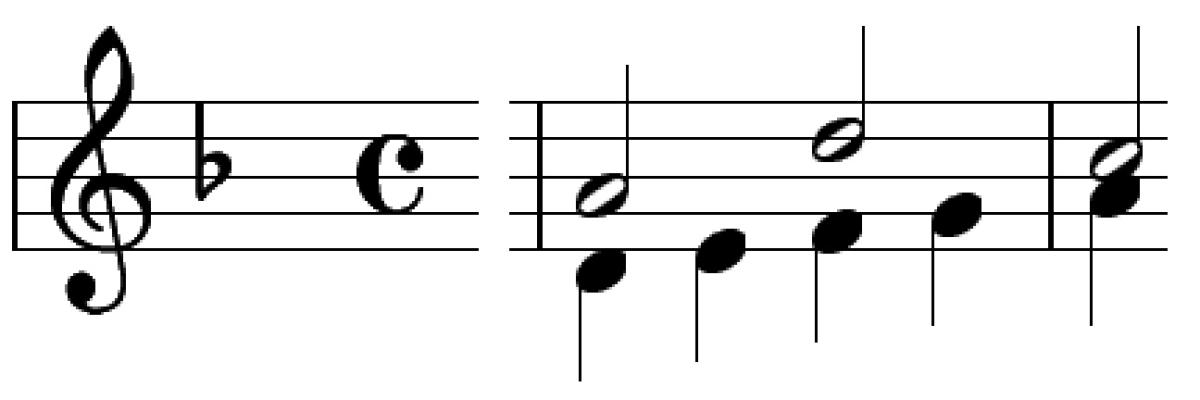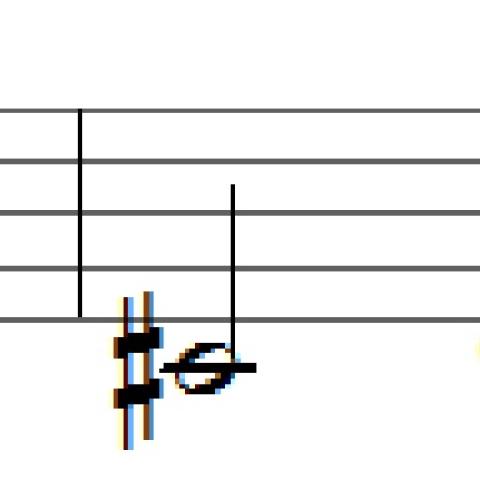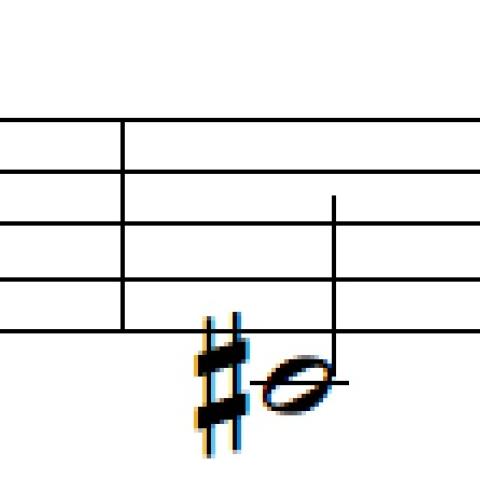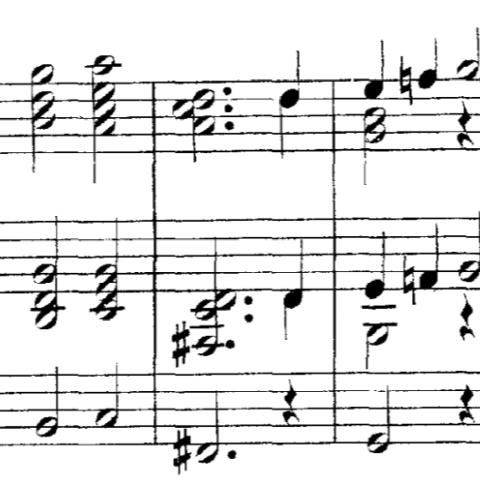
The Art of the Fugue, part 7
I begin this column with an account of something that happened in a recent lesson, something surprisingly germane, by complete coincidence, to what I had already been planning to write about this month. I notice recently that between when I finish one column and when I am due to start writing the next, something often crosses my path, completely by chance, that is relevant to what is coming next in the column. Sometimes it provides an example, other times an interesting sidelight. Often it essentially ratifies and strengthens what I had been planning to write; yet sometimes it suggests a bit of a change.
Before I get to my story, it occurs to me that the fact that I encounter these coincidences as often as I do is itself a commentary on the philosophy and purpose of the column. My hypothesis is that everything is relevant to performing music and to teaching others about music and performance. I believe everything we encounter in life might be potentially fruitful for our music and our teaching.
This series of columns on The Art of the Fugue is meant to be an account of my working process. Part of that working process is to be aware of anything that might lead to an interesting thought about the piece or the performance. If we notice things and assume that they will be interesting and relevant, we cannot lose. If they are relevant, the gain from having noticed them is clear and describable; if they are not, the thought process sparked by noticing them is still rewarding.
The teacher-student experience
A week or so ago a harpsichord student of mine brought up The Goldberg Variations, partly as a step in thinking about whether to work on the piece, partly to ask a few questions. What is the overall structure of the piece? Did the composer write the movements in the order in which we see them? Does the order matter in performance? If so, why? Is it about individual transitions or something else? We talked about all of this a bit, mentioning “official” sources of structure and continuity. These start with the basic fact that each variation shares some version of the same underlying harmonic pattern and includes the phenomenon of every third variation’s being a canon. We talked about the formal layout of the canons, in which each one is a canon at a one-greater interval—Variation 3 a canon at the unison, Variation 6 at the second, Variation 9 at the third, and so on, up to Variation 27, which is a canon at the interval of a ninth. We discussed, but did not resolve the question of whether this formal layout is palpably meaningful to a listener, or is just meaningful as a formality.
Then we tried a live-action version of something similar to an experiment I described in a recent column, about electronic listening. I played a movement, or the last few lines of one, and my student turned some pages at random. I then started the movement on the new page, randomly chosen, after the one that I had just completed. We did not go through the whole piece in this fashion—not enough time, and other things to do. But we got a good sample of what it felt like to move from one variation to another when that transition is neither what the composer had in mind nor what we are used to.
The result was that each transition sounded fine (“worked”, nothing jarring) but also sounded odd. The oddness came from the confounding of fixed expectations, fixed by years (or for me, decades) of listening. It is hard or impossible to sort out what each of those transitions would have sounded like to someone who had never heard the piece before. I strongly suspect that they would each have been just fine, but I cannot be sure of that. This was a reminder that structure comes in part from expectation. The kind of expectation that comes simply from having heard the work before can be very powerful. But I assume (or perhaps I hope) that expectations created intrinsically by the music are even more powerful.
Sources of overall structure in The Art of the Fugue
It is my working hypothesis that in The Art of the Fugue there are two main sources of overall structure. The first is the nature of the theme itself and the way that it sets up other themes and musical gestures to be meaningful. The second is the recurrence of specific themes. I mentioned both of these in my 1985 program notes that were reprinted here in two recent columns. But I want to delve into both of them in more detail in this column and in next month’s. Of these two ideas, the recurrence of specific themes is, perhaps, the more clear-cut. It is not remotely unusual to include as a source of continuity and of structure. This includes all of the uses of the main theme and its variants: the top level of what we get by contrapuntal analysis. But there is also more below the surface.
My thoughts about the nature of The Art of the Fugue theme are perhaps more speculative. That theme starts on a note, goes up a perfect fifth, goes down a major third, then down a minor third, then down a semitone. After that it goes up by that same semitone, and up and down by step until it ends. Every musical theme, of course, has some pattern of intervals that I or anyone could describe in words. What is striking to me about this theme is how comprehensively, systematically, almost encyclopedically, it lays out all of the intervals that define tonal music. They occur in what could plausibly be considered their order of importance, there is essentially no redundancy: almost no interval is repeated until each interval has been heard (the exception is the semitone), and the inversions of intervals are assumed rather than stated.
My own experience as a listener has been that throughout the piece I hear any interval as a reference to this theme. This starts right away, as soon as there is anything to hear other then the theme itself. The scale notes that make up the counterpoint to the second entry of the theme at measure 5 fill in the opening interval of the theme itself (Example 1).
Does a listener hear it this way? Does a listener spontaneously think, “that is that same theme” or “that is a reference to that same theme?” I believe I do, and that I began to do so after repeated listening years ago, before I thought that I might have any idea why.
The chromatic countersubject in Contrapunctus III seems to arise out of that original semitone that is the interval from the fourth note to the fifth note of the opening theme. The leaping thirds that are one of the characteristic gestures of Contrapunctus IV seem to answer the thirds that make up measure 2 of the theme. Contrapunctus V plays around further with the idea of the third. First of all, when the theme comes in the second time, it is a third away from the note that accompanies it. (In Contrapuncti I–IV, this has always been the interval of a fifth.) Second, this movement contains a pervasive gesture that is the interval of a third filled in by step, and there are also a lot of parallel thirds!
The thirty-second-note flourish that pervades Contrapunctus VI, and that is a principal justification of the heading of this movement as being “in French Style,” sounds like a reference to the last four notes of the opening theme. The mordent-like figure that enters Contrapunctus VII in measure 3 is related to the semitone-based gesture in the opening theme going (in Contrapunctus I) from the end of measure 2 into measure 3. For me, the nature of the opening theme itself turns the whole piece into a tapestry of familiar, known, referential themes and gestures.
A complement to this is the gradual introduction of the octave into the picture. The opening subject, while displaying all of the discrete intervals of its tonal language, almost pointedly fails to encompass an octave. However, the first thing that happens after the filled-in reference to the opening interval that I pointed out in Example 1 is a drop of an octave: the first octave in the piece. When the second voice to enter (the soprano voice) finishes its statement of the fugue subject, it immediately makes an octave leap: one not in any way required by the counterpoint or harmony (Example 2).
Then, later on, whereas each of the first seven contrapuncti begins with the interval of either a fifth or a fourth, Contrapunctus VIII beings with a step, a very striking change. While the compass of the theme of each of the first seven movements has been never more than a sixth, the compass of the opening subject of Contrapunctus VII is a tenth, but one that could also be seen as outlining an octave. (The first and last notes of the subject are an octave apart, and the note that creates the tenth is off the beat and somewhat ornamental.) Then Contrapunctus IX begins with the brand-new gesture of a leap of an octave. The compass of this subject is a ninth, and that of the next movement a tenth, so that we are in a region of expanded compass of themes.
All of this is enough to make me feel that it makes sense to say that the subject or fundamental building block of The Art of the Fugue is not “the AOTF fugue subject” but the very concept of the melodic interval. This in itself does not create structure in the sense of linear shape. But it establishes the conditions for the creation of that structure.
The repetition, recurrence, and referencing of identifiable individual themes is the foundation of counterpoint, and probably the major defined source of contrapuntal structure. At the level of “this theme is the inversion of that theme” or “this theme is the same as that theme, but with altered rhythm,” this is fundamental and definitional. And there is an abundance of that sort of correspondence in The Art of the Fugue. What interests me beyond that is the more fleeting or hidden thematic connections. There are quite a few of these in the piece. The phenomenon that I have tried to describe above (the tendency of this piece to permit any interval, even in an isolated occurrence, to seem meaningfully thematic) is a background against which it becomes clear, I think, that small, individual thematic connections are meaningful to a listener and almost certainly intentional on the part of the composer. Some of the ones that stand out to me are as follows:
This seems to be an isolated event in the bass line in measure 35 of Contrapunctus IV. The notes seem like a filler in a kind of quasi-cadence (Example 3).
All of the eighth-note motion in the movement prior to this has been by step, as is almost all of it after. This is then picked up in Contrapunctus X (Example 4). The figure that enters in the tenor voice at the beginning of this example is passed back and forth among all of the voices and then culminates in an exact statement (at a different pitch level) of the theme from Contrapunctus IV cited above.
The beginning of the main theme of Contrapunctus X (Example 5) is referenced in passing in the bass voice near the end of Contrapunctus XI (Example 6) and again in the middle of the final movement (Example 7).
That latter one is an “answer” rather than a literal quoting of the motif. Are these parallels valid? It could certainly be argued that the fragments of themes that I am pointing to here are just routine cadential figures or other tropes that are too non-specific to be meaningful. I do not hear them that way. Again, I think that the structure of The Art of the Fugue subject itself predisposes any motivic entity to be significant, and the ways in which some of these fleeting motifs are deployed seems too systematic to be non-intentional.
As I said above, I think that there is more to be gained by assuming that correspondences are real than by resisting hearing them that way. Next month I will bring forward several more examples—perhaps even more important to the actual overall structure of the work as a whole—and talk more expressly about that structure.
To be continued.






